Related Research Articles

The League of Extraordinary Gentlemen (LoEG) is a multi-genre, cross over comic book series co-created by writer Alan Moore and artist Kevin O'Neill which began in 1999. The comic book spans four volumes, an original graphic novel, and a spin-off trilogy of graphic novella. Volume I and Volume II and the graphic novel Black Dossier were published by the America's Best Comics imprint of DC Comics. After leaving the America's Best imprint, the series moved to Top Shelf and Knockabout Comics, which published Volume III: Century, the Nemo Trilogy, and Volume IV: The Tempest. According to Moore, the concept behind the series was initially a "Justice League of Victorian England" but he quickly developed it as an opportunity to merge elements from numerous works of fiction into one world, in a matter akin to the shared fictional universes of Marvel and DC Comics.
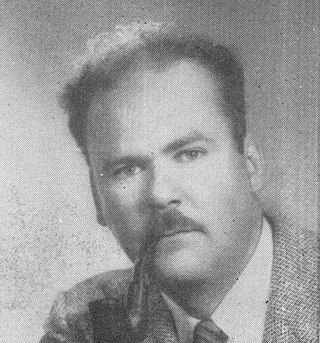
Dallas McCord "Mack" Reynolds was an American science fiction writer. His pen names included Dallas Ross, Mark Mallory, Clark Collins, Dallas Rose, Guy McCord, Maxine Reynolds, Bob Belmont, and Todd Harding. His work focused on socioeconomic speculation, usually expressed in thought-provoking explorations of utopian societies from a radical, sometime satiric perspective. He was a popular author from the 1950s to the 1970s, especially with readers of science fiction and fantasy magazines.
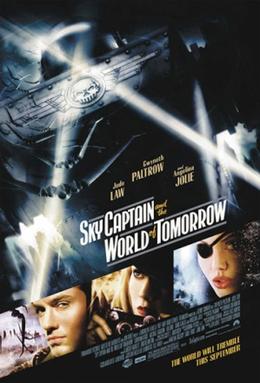
Sky Captain and the World of Tomorrow, often shortened to Sky Captain, is a 2004 science fiction action-adventure film written and directed by Kerry Conran in his directorial debut, and produced by Jon Avnet, Sadie Frost, Jude Law and Marsha Oglesby. It stars Jude Law, Gwyneth Paltrow, and Angelina Jolie. It is an example of "Ottensian" (pre-WWII) dieselpunk.
Blue Sky Studios, Inc. was an American computer animation studio based in Greenwich, Connecticut. It was founded on February 22, 1987 by Chris Wedge, Michael Ferraro, Carl Ludwig, Alison Brown, David Brown, and Eugene Troubetzkoy after their employer, MAGI, one of the visual effects studios behind Tron, shut down. Using its in-house rendering software, the studio created visual effects for commercials and films before dedicating itself to animated film production. Its first feature, Ice Age, was released in 2002 by 20th Century Fox. It produced 13 feature films, the final one being Spies in Disguise, released on December 25, 2019.
Ronald Anstuther Davidson Sr was an American screenwriter, story editor and associate producer.
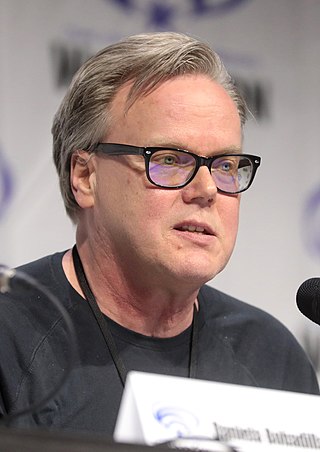
Bruce Walter Timm is an American artist, animator, writer, producer, and director. He is best known for contributing to building the modern DC Comics animated franchise, most notably as the head producer behind Batman: The Animated Series (1992–1995), Superman: The Animated Series (1996–2000), The New Batman Adventures (1997–1999), Batman Beyond (1999–2001), Justice League (2001–2004), and Justice League Unlimited (2004–2006).

John Christian Wedge is an American animator, filmmaker, and voice actor. He is best known for directing the films Ice Age (2002), Robots (2005), Epic (2013), and Monster Trucks (2016). He is a co-founder of the now-defunct animation studio Blue Sky Studios and voices the character Scrat in the Ice Age franchise since 2002.

The American comic book character Superman, created in 1938, has appeared in many types of media since the 1940s. Superman has appeared in radio, television, movies, and video games each on multiple occasions, and his name, symbol, and image have appeared on products and merchandise.

Zombies of the Stratosphere is a 1952 colorless Republic Studios serial directed by Fred C. Brannon, with a screenplay by Ronald Davidson, and special effects by Republic's Lydecker brothers. It was intended to be Republic's second serial featuring "new hero" Commando Cody and the third 12-chapter serial featuring the rocket-powered flying jacket and helmet introduced in King of the Rocket Men (1949). Instead, for reasons unknown, the hero was renamed "Larry Martin", who must prevent Martian invaders from using a hydrogen bomb to blow Earth out of its orbit, so that the Martians can move a dying Mars into a much closer orbital position to the Sun. As in Radar Men from the Moon, much of the screen time for each of the dozen chapters is spent on fistfights and car chases between the heroes and a gang of earthly crooks hired by renegade scientist Dr. Harding and his extraterrestrial colleague Marex to steal and stockpile the Atomic supplies needed for construction of the H-bomb.

Ib Jørgen Melchior was a Danish-American novelist, short-story writer, film producer, film director, and screenwriter of low-budget American science fiction movies, most of them released by American International Pictures.

Spencer Gordon Bennet was an American film producer and director. Known as the "King of Serial Directors", he directed more film serials than any other director.

The Haunted World of El Superbeasto is a 2009 American adult animated superhero comedy film directed, co-written and co-produced by Rob Zombie. The film was written by Zombie and Tom Papa from Zombie's comic book series of the same name. The film was produced by Starz Media and Film Roman, with animation provided by Carbunkle Cartoons and Big Star Productions.

The Purple Monster Strikes is a 1945 Republic Movie serial. It was also released as a Century 66 television film under the title D-Day on Mars (1966).

Flying Disc Man from Mars is a 1950 Republic Pictures 12-chapter black-and-white science fiction adventure film serial, produced by Franklin Adreon, directed by Fred C. Brannon, that stars Walter Reed, Lois Collier, Gregory Gaye, James Craven, Harry Lauter, and Richard Irving. Disc Man is considered a weak example of the serial medium, even compared to other post-World War II serials. In 1958 Republic edited the serial's 167 minutes of footage into a 75-minute feature, released under the new title Missile Monsters.
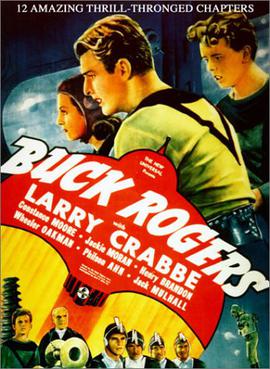
Buck Rogers is a 1939 science fiction film serial, produced by Universal Pictures. It stars Buster Crabbe as the eponymous hero, Constance Moore, Jackie Moran and Anthony Warde. It is based on the Buck Rogers character created by Philip Francis Nowlan, who had appeared in magazines and comic strips since 1928.
The Mechanical Monsters (1941) is the second of seventeen animated Technicolor short films based upon the DC Comics character Superman. Produced by Fleischer Studios, the story features Superman battling a mad scientist and his army of robots. It was originally released by Paramount Pictures on November 28, 1941.

The Sky Ranger is a 1921 American 15-episode/chapter silent film serial. Directed by George B. Seitz who also starred with June Caprice, the film serial was an adventure film with locales as exotic as Tibet. The plot staple of an inventor of aviation technology having to contend with conspirators who wish to steal the invention, often appeared in aviation films. The Sky Ranger is considered to be lost.
In his lifetime Arthur C. Clarke participated in film, television, radio and other media in a number of different ways.
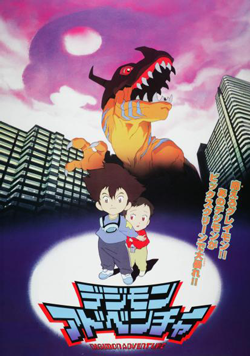
Digimon Adventure is a 1999 Japanese animated short film, directed by Mamoru Hosoda in his directorial debut. A part of the Digimon media franchise, Digimon Adventure is the first Digimon film, and serves as a prologue to the 1999 anime television series of the same name. The film was released in theaters in Japan on March 6, 1999, the day before the release of the Digimon Adventure television series.
References
- 1 2 3 4 5 6 Adams, John Joseph. "Interview with Kerry Conran".
- 1 2 Axmaker, Sean. ""At the cusp of a renaissance": Kerry Conran". Archived from the original on 2007-10-13.
- 1 2 Conran, Kerry. "Sky Captain and the World of Tomorrow (Widescreen Special Collector's Edition)". Amazon.
- ↑ Sampson, Mike. "INT: Kerry Conran". Archived from the original on 2018-09-28. Retrieved 2011-04-05.
- ↑ Desowitz, Bill. "Meet the Sky Captain Visionary: Q&A with Kerry Conran". Archived from the original on 2011-08-11.
- ↑ "Sky Captain and the World of Tomorrow (2004)". Rotten Tomatoes .
- 1 2 Turney, Drew (October 29, 2019). "Interview: Kerry Conran : How Sky Captain and the World of Tomorrow Changed the World". Movie Hole. Retrieved May 19, 2021.
- ↑ Topel, Fred (2009-01-09). "WALL-E helmer Andrew Stanton talks John Carter of Mars". Sci Fi Wire . Archived from the original on 2009-02-18.
- ↑ Knowles, Harry. "UPDATED!! JOHN CARTER OF MARS has a new director and he's so money..."
- 1 2 Brevet, Brad. "INTERVIEW: Helmer Kerry Conran Talks SKY CAPTAIN – Part 2".
- ↑ "Full cast and crew for Gumdrop (2012)". IMDb .
- ↑ "Full cast and crew for Monster Roll (2012)". IMDb .